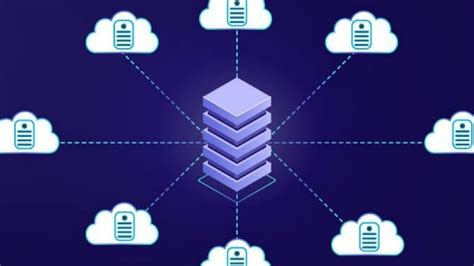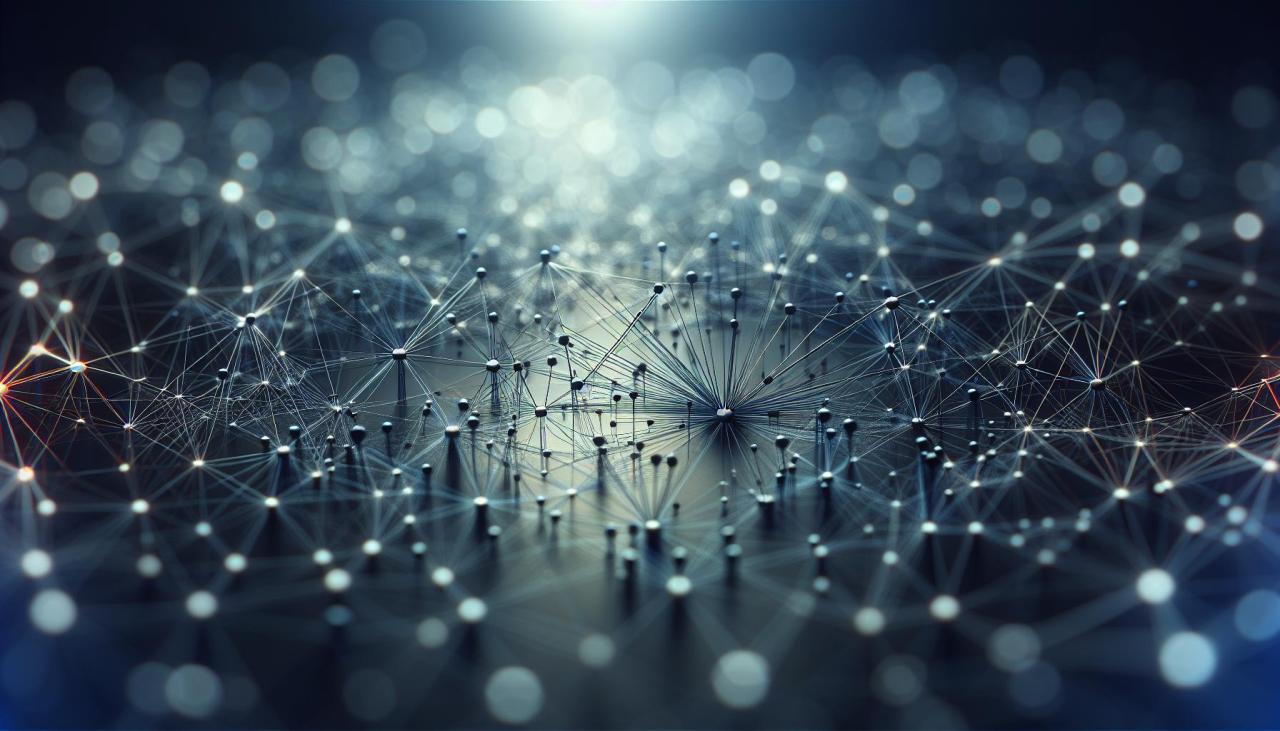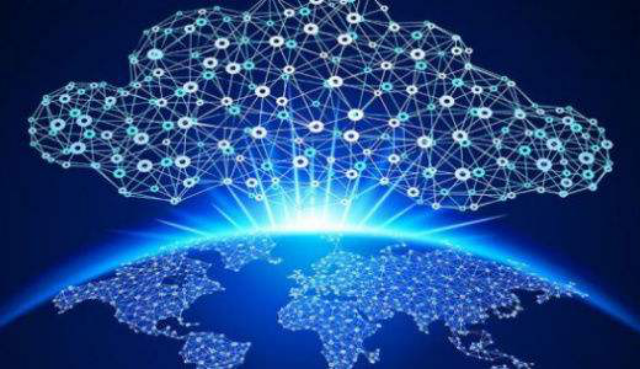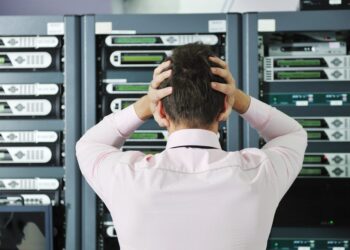In the relentlessly evolving digital landscape, the foundational architecture supporting our online world is undergoing a profound transformation. For decades, the internet has largely operated on a centralized model, with data and applications residing on powerful, singular servers or a limited number of interconnected data centers. However, a revolutionary paradigm is gaining unprecedented momentum: decentralized networks. This shift represents not merely an incremental upgrade but a fundamental re-imagination of how digital information is stored, processed, and accessed. Moving away from traditional, centralized server evolution models, decentralization promises enhanced security, unparalleled resilience, and a more equitable distribution of control. For businesses, developers, and content creators alike, understanding this pivotal shift is crucial for navigating the future of the internet and, for those focused on monetization, for driving high Google AdSense revenue through insightful and timely content. This comprehensive article will delve deep into the mechanics, benefits, challenges, and transformative potential of decentralized networks, charting their evolution and their profound implications for tomorrow’s digital infrastructure.
The Centralized Paradigm: The Internet’s Foundation
To truly appreciate the significance of decentralized networks, we must first grasp the pervasive centralized model that has underpinned the internet since its inception. In a centralized system, a single entity (like a company, government, or service provider) controls one or a cluster of servers that manage data, applications, and network traffic.
Key characteristics of centralized networks include:
- Single Point of Control: A central authority dictates access, data policies, and operational parameters.
- Hierarchical Structure: Information flows to and from a central hub.
- Scalability Challenges: Scaling often means investing in larger, more powerful central servers, which can be expensive and complex.
- Vulnerability to Attack: A single point of failure makes the entire system susceptible to cyberattacks (DDoS, data breaches), censorship, or technical outages.
- Data Silos: Information is often confined within the central entity’s infrastructure, limiting interoperability and user control.
Examples abound: traditional client-server applications, cloud storage services (like Dropbox or Google Drive), and even social media platforms like Facebook and Twitter. While efficient for quick deployment and management, their inherent vulnerabilities and concentration of power have fueled the search for more robust and resilient alternatives. The need for a new server evolution paradigm became increasingly clear as the internet matured.
The Rise of Decentralization: A Paradigm Shift
Decentralized networks fundamentally alter this dynamic by distributing data, processing power, and control across a multitude of interconnected nodes. Instead of relying on a single central server, information is replicated and verified across many participants, making the system inherently more robust and resistant to failures or malicious attacks. This concept isn’t entirely new—the early internet (ARPANET) had decentralized elements for resilience, but modern decentralization leverages cryptographic techniques and consensus mechanisms to achieve unprecedented levels of trustlessness and security.
The core principles of decentralization include:
A. No Single Point of Failure: Because data and functionality are distributed, the failure or attack on one node does not bring down the entire network. This dramatically increases resilience and uptime. B. Increased Security and Immutability: Data is often cryptographically linked and replicated across many nodes. Tampering with data on one node would require compromising a significant portion of the network, making it extremely difficult and expensive. This also leads to data immutability, where once recorded, data cannot be altered. C. Censorship Resistance: Without a central authority, it becomes exceedingly difficult for any single entity (government, corporation) to censor or block information. As long as enough nodes are operational, the network can continue to function. D. Enhanced Privacy and User Control: Users can often maintain greater control over their data, choosing who can access it and how it is used, moving away from models where central entities control personal information. E. Transparency (in many cases): Many decentralized networks, particularly public blockchains, operate with a high degree of transparency, where all transactions or data changes are publicly verifiable (though personal identity can remain pseudonymous). F. Resistance to Monopoly: By removing central gatekeepers, decentralized networks can foster a more open and competitive environment, preventing single entities from dominating specific services or markets.
This marks a significant step in server evolution, moving from the physical location of a powerful machine to a distributed, virtualized, and resilient infrastructure.
Key Technologies Driving Decentralized Networks
The current surge in decentralized networks is powered by several groundbreaking technological advancements, each contributing a vital piece to the puzzle.
A. Blockchain Technology
At the forefront of the decentralized revolution is blockchain technology. A blockchain is a distributed, immutable ledger that records transactions in “blocks” linked together cryptographically. Each block contains a timestamp and a hash of the previous block, making it highly secure and tamper-proof.
- Distributed Ledger Technology (DLT): The ledger is not stored in one central location but is replicated and maintained by all participants (nodes) in the network. This eliminates the need for a central authority to verify transactions.
- Cryptographic Hashing: Each block’s data is converted into a unique, fixed-size string of characters. Any change to the data would alter the hash, immediately signaling tampering.
- Consensus Mechanisms: Networks use algorithms to agree on the state of the ledger.
- Proof of Work (PoW): (e.g., Bitcoin, Ethereum 1.0) Miners compete to solve complex mathematical puzzles; the first to solve it adds a new block. Energy-intensive but highly secure.
- Proof of Stake (PoS): (e.g., Ethereum 2.0, Cardano) Validators are chosen to create new blocks based on the amount of cryptocurrency they “stake” as collateral. More energy-efficient.
- Delegated Proof of Stake (DPoS): (e.g., EOS, Tron) Users elect delegates who validate transactions, offering faster processing.
- Proof of Authority (PoA): (e.g., private blockchains) Transactions are validated by approved accounts, suitable for consortiums where trust is established.
- Smart Contracts: Self-executing contracts with the terms of the agreement directly written into code. They automatically execute when predefined conditions are met, without the need for intermediaries. This is crucial for building decentralized applications (dApps).
B. Peer-to-Peer (P2P) Networks
While not new (Napster, BitTorrent), modern P2P networks are integral to decentralization. They allow direct communication and resource sharing between individual computers (peers) without a central server. In decentralized networks, peers act as nodes, storing and sharing data or processing power.
- Direct Communication: Enables faster, more efficient data transfer between users.
- Resource Pooling: Individual computers contribute their unused resources (storage, bandwidth, CPU cycles) to the network.
- Resilience: The network’s functionality improves with more participants, as data redundancy increases.
C. Decentralized Storage Solutions
Traditional cloud storage relies on centralized servers (e.g., Amazon S3, Google Cloud Storage). Decentralized storage breaks files into encrypted pieces and distributes them across a global network of independent nodes, offering enhanced privacy, security, and often lower costs.
- File Fragmentation and Encryption: Files are broken into smaller chunks, encrypted, and then spread across multiple hosts. This prevents any single host from accessing the entire file or its contents.
- Redundancy: Multiple copies of file chunks are stored across different nodes, ensuring data availability even if some nodes go offline.
- Examples: IPFS (InterPlanetary File System), Filecoin, Storj, Arweave. These represent a new frontier in server evolution for data persistence.
D. Decentralized Computing (DePIN – Decentralized Physical Infrastructure Networks)
This emerging trend involves creating decentralized networks of physical hardware to provide real-world services.
- Distributed Computing Power: Networks like Render Network or Golem allow users to rent out their unused GPU/CPU power for tasks like 3D rendering, AI computations, or scientific simulations.
- Decentralized Wireless Networks: Projects like Helium are building global, decentralized wireless networks by incentivizing individuals to host hotspots.
- Decentralized Energy Grids: Localized energy sharing and trading via blockchain.
These technologies represent a fundamental shift in how we build and interact with digital infrastructure, evolving beyond traditional monolithic servers.
Applications and Use Cases of Decentralized Networks

The potential applications of decentralized networks are vast and continue to expand, moving beyond cryptocurrency into mainstream industries.
A. Finance (DeFi – Decentralized Finance)
DeFi aims to recreate traditional financial services (lending, borrowing, trading, insurance) using blockchain and smart contracts, eliminating intermediaries.
- Decentralized Exchanges (DEXs): Allow peer-to-peer trading of cryptocurrencies without a central custodian, reducing the risk of hacks or censorship.
- Lending and Borrowing Protocols: Users can lend or borrow crypto assets directly from others using smart contracts, often with lower fees and greater transparency.
- Stablecoins: Cryptocurrencies pegged to a stable asset (like USD), often governed by decentralized protocols.
B. Web3 and Decentralized Applications (dApps)
Web3 is envisioned as a decentralized internet built on blockchain technology, where users have greater control over their data and identity. dApps run on decentralized networks, using smart contracts and often decentralized storage.
- Social Media dApps: Platforms that aim to give users ownership of their data and content, and control over platform governance, rather than a central corporation.
- Gaming (GameFi): Integrating blockchain into games, allowing players true ownership of in-game assets (NFTs) and enabling “play-to-earn” models.
- Decentralized Identity (DID): Giving users sovereign control over their digital identity, allowing them to selectively share verified credentials without relying on central identity providers.
C. Supply Chain Management
Blockchain’s immutability and transparency are ideal for tracking goods and ensuring authenticity.
- Provenance Tracking: Tracing products from origin to consumer, ensuring ethical sourcing and preventing counterfeiting.
- Transparency and Efficiency: Automating payments and verification steps via smart contracts, reducing delays and human error.
D. Digital Collectibles and NFTs (Non-Fungible Tokens)
NFTs are unique digital assets whose ownership is recorded on a blockchain. They’ve revolutionized digital art, music, and collectibles.
- Verifiable Ownership: NFTs provide irrefutable proof of ownership for digital items.
- Creator Royalties: Smart contracts can automatically pay a percentage of future sales back to the original creator.
E. Data Privacy and Security Solutions
Decentralized networks offer new ways to protect sensitive information.
- Decentralized VPNs: Routing internet traffic through a network of independent nodes rather than a central server, enhancing privacy and censorship resistance.
- Secure Messaging: End-to-end encrypted messaging where data is stored on distributed nodes, preventing central eavesdropping.
These diverse applications demonstrate how server evolution is moving towards a distributed and democratized model.
Challenges and Considerations for Decentralized Networks
Despite their immense potential, decentralized networks face significant challenges that need to be addressed for widespread adoption.
A. Scalability
Many decentralized networks, especially early blockchains, struggle with transaction speed and volume.
- Blockchain Trilemma: The inherent trade-off between decentralization, security, and scalability. Achieving all three simultaneously is difficult.
- Layer 2 Solutions: Solutions like rollups (Optimistic, ZK-Rollups) or sidechains are being developed to process transactions off the main blockchain, then settle them on-chain, improving scalability.
B. User Experience (UX)
Current decentralized applications can be complex and unintuitive for the average user.
- Wallet Management: Cryptographic keys, seed phrases, and gas fees are hurdles for new users.
- Onboarding: The process of getting started with dApps can be cumbersome compared to traditional web services.
C. Regulatory Uncertainty
Governments worldwide are grappling with how to regulate decentralized technologies, creating an unpredictable environment.
- Compliance: How to apply existing financial, data privacy, and anti-money laundering (AML) regulations to decentralized entities.
- Jurisdiction: The borderless nature of decentralized networks complicates legal enforcement.
D. Energy Consumption (for PoW)
Proof of Work consensus mechanisms, notably Bitcoin’s, consume significant amounts of energy, raising environmental concerns.
- Shift to PoS: Networks like Ethereum are transitioning to Proof of Stake to drastically reduce energy consumption.
- Green Initiatives: Development of more energy-efficient consensus mechanisms and renewable energy adoption by miners.
E. Governance and Upgradeability
Decentralized governance can be slow and challenging.
- Consensus Challenges: Reaching agreement among a large, diverse group of stakeholders for upgrades or rule changes.
- Forking: Disagreements can lead to network “forks,” creating multiple versions of the blockchain.
F. Security Vulnerabilities (Smart Contracts)
While the underlying blockchain is secure, smart contracts can have bugs or vulnerabilities if not meticulously coded and audited.
- Code Audits: The importance of rigorous security audits for smart contract code.
- Immutable Bugs: Once deployed, buggy smart contracts can be difficult or impossible to fix without significant effort.
Overcoming these challenges is crucial for the next phase of server evolution into a truly decentralized internet.
The Future: Hybrid Models and Gradual Decentralization

While a fully decentralized internet might be a distant goal, the immediate future likely involves hybrid models. Existing centralized services can gradually integrate decentralized components, and new decentralized applications can leverage centralized elements for better performance or UX.
A. Centralized Infrastructure Supporting Decentralized Apps
Many dApps still rely on centralized services for parts of their stack, such as hosting front-ends, indexing blockchain data, or providing API access.
- Infura/Alchemy: These services provide managed access to blockchain nodes, simplifying dApp development.
- Cloud Storage for Frontend: Websites for dApps are often hosted on centralized cloud providers for speed and ease of deployment.
B. Progressive Decentralization
Projects often start with some centralized elements for speed and control, then gradually decentralize over time as the technology matures and the community grows.
- Phased Rollouts: Gradually transferring control of protocols or treasuries to a decentralized autonomous organization (DAO).
- Community Building: Fostering a robust and engaged community to participate in governance and operation.
This incremental approach allows for real-world adoption while working towards the long-term vision of a truly decentralized internet. This careful, phased approach is indicative of a mature server evolution trajectory.
Redefining Digital Foundations
The advent of decentralized networks marks a pivotal moment in the history of the internet and a fundamental shift in server evolution. Moving beyond the limitations and vulnerabilities of centralized infrastructures, these networks offer the promise of enhanced security, unparalleled resilience, censorship resistance, and greater user control over data and identity. While significant challenges related to scalability, user experience, and regulation persist, the rapid pace of innovation in blockchain, P2P technologies, and decentralized computing is actively addressing these hurdles.
From revolutionizing finance with DeFi to building a truly user-owned internet with Web3, decentralized networks are not just a technological curiosity; they are a profound re-imagining of how our digital world will operate. The transition will likely be a gradual one, involving hybrid models and progressive decentralization, but the direction is clear. For individuals, businesses, and content creators, understanding this evolving landscape is paramount. Embracing the potential of decentralization means preparing for a digital future that is more open, transparent, and distributed, reshaping everything from how we store our data to how we interact with our digital identities. This ongoing server evolution towards decentralization represents not just a trend, but a foundational transformation of the digital commons, ripe with opportunities for those who understand its implications.







